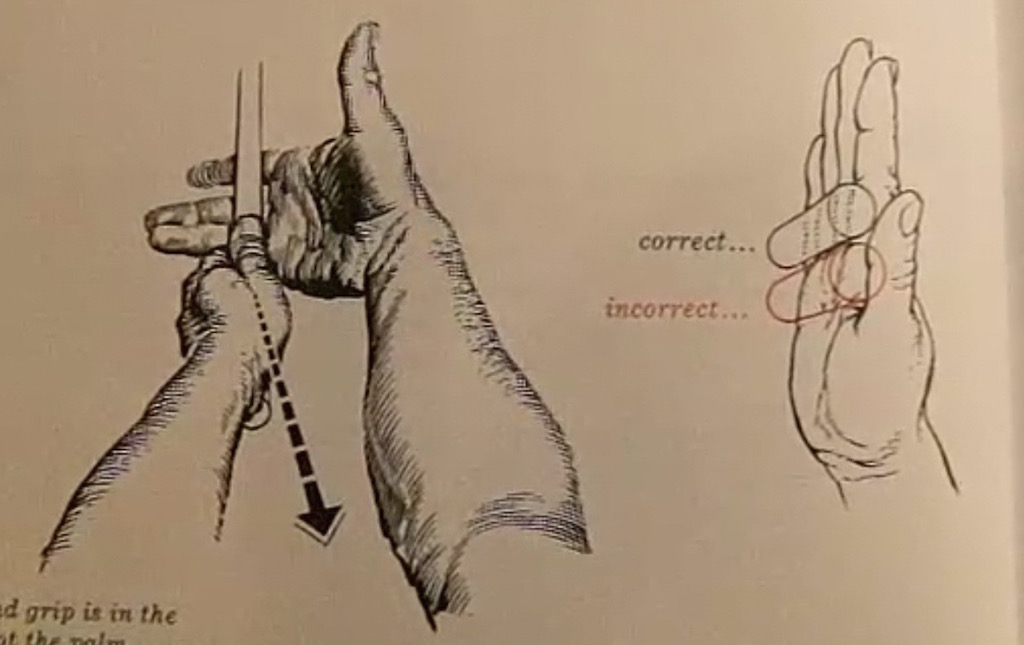Instruction
Kelley: Focus on what you can control

(Part One) Changing The Swing
The address position is the easiest part to change in the golf swing. If an adjustment can be made that will influence the rest of the swing, it should be made here. The set-up is a static position, so you have full control over it. If concepts are understood with feedback given (a mirror or video) it can easily be corrected and monitored. Once the club is in motion, a change becomes much more difficult.
Most faults in the swing originate in the set-up. All to often players go directly to the part they want to change in the middle of their swing, not understating their is an origin to what they do. When the origin isn’t fixed, trying to directly change the part in the middle is difficult and will often leave the player frustrated. Even worse, the part they are looking to fix may actually be a “match-up” move by the brain and body. These match-up moves actually counter -balance a previous move to try and make the swing work.
An example of not fixing the origin and understanding the importance of the set-up is when players are trying to shallow the club on the downswing (a common theme on social media). They see the steep shaft from down-the-line and directly try and fix this with different shallowing motions. More times then not, the origin to this is actually in the set-up and/or direction the body turns back in the backswing. If the body is out of position to start and turns back “tilty”, a more difficult match-up is required to shallow the shaft.
Another simple simple set-up position that is often over-looked is the angle of the feet. For efficiency, the lead foot should be slightly flared and the trail foot flared out as well (the trail more flared then the lead). When the trail foot is straight or even worse pointed inwards, a player will often shift their lower in the backswing rather then coil around in the groin and glutes. Trying to get a better lower half coil is almost impossible with poor foot work.

The golf swing is hard to change, so work on the things that are simple and what you have control over. You may not be able to swing it like a world class player, but with proper training you can at least the address the ball like one. When making a swing change, look to fix the origin first to facilitate the change.
*Part two of this article will be focusing on what you can control on the golf course, a key to better performance
Twitter: KKelley_golf
- LIKE40
- LEGIT7
- WOW1
- LOL0
- IDHT0
- FLOP0
- OB0
- SHANK1
Instruction
Clement: Weak grips are injuries in the making for many golfers

Like Jordan Spieth, trying to go to a bowed wrist at the top or in the downswing to square the club is placing you in a dangerous position for your lead wrist; you are one tree root or deep rough situation away from a nasty injury that could easily require surgery. Don’t let this be you.
- LIKE0
- LEGIT0
- WOW0
- LOL0
- IDHT0
- FLOP2
- OB0
- SHANK3
Instruction
Clement: Laid-off or perfect fade? Across-the-line or perfect draw?

Some call the image on the left laid off, but if you are hitting a fade, this could be a perfect backswing for it! Same for across the line for a draw! Stop racking your brain with perceived mistakes and simply match backswing to shot shape!
- LIKE1
- LEGIT0
- WOW0
- LOL0
- IDHT0
- FLOP0
- OB0
- SHANK1
Instruction
The Wedge Guy: The easiest-to-learn golf basic

My golf learning began with this simple fact – if you don’t have a fundamentally sound hold on the golf club, it is practically impossible for your body to execute a fundamentally sound golf swing. I’m still a big believer that the golf swing is much easier to execute if you begin with the proper hold on the club.
As you might imagine, I come into contact with hundreds of golfers of all skill levels. And it is very rare to see a good player with a bad hold on the golf club. There are some exceptions, for sure, but they are very few and very far between, and they typically have beat so many balls with their poor grip that they’ve found a way to work around it.
The reality of biophysics is that the body moves only in certain ways – and the particulars of the way you hold the golf club can totally prevent a sound swing motion that allows the club to release properly through the impact zone. The wonderful thing is that anyone can learn how to put a fundamentally sound hold on the golf club, and you can practice it anywhere your hands are not otherwise engaged, like watching TV or just sitting and relaxing.
Whether you prefer an overlap, interlock or full-finger (not baseball!) grip on the club, the same fundamentals apply. Here are the major grip faults I see most often, in the order of the frequency:
Mis-aligned hands
By this I mean that the palms of the two hands are not parallel to each other. Too many golfers have a weak left hand and strong right, or vice versa. The easiest way to learn how to hold the club with your palms aligned properly is to grip a plain wooden ruler or yardstick. It forces the hands to align properly and shows you how that feels. If you grip and re-grip a yardstick several times, then grip a club, you’ll see that the learning curve is almost immediate.
The position of the grip in the upper/left hand
I also observe many golfers who have the butt of the grip too far into the heel pad of the upper hand (the left hand for right-handed players). It’s amazing how much easier it is to release the club through the ball if even 1/4-1/2″ of the butt is beyond the left heel pad. Try this yourself to see what I mean. Swing the club freely with just your left hand and notice the difference in its release from when you hold it at the end of the grip, versus gripping down even a half inch.
To help you really understand how this works, go to the range and hit shots with your five-iron gripped down a full inch to make the club the same length as your seven-iron. You will probably see an amazing shot shape difference, and likely not see as much distance loss as you would expect.
Too much lower (right) hand on the club
It seems like almost all golfers of 8-10 handicap or higher have the club too far into the palm of the lower hand, because that feels “good” if you are trying to control the path of the clubhead to the ball. But the golf swing is not an effort to hit at the ball – it is a swing of the club. The proper hold on the club has the grip underneath the pad at the base of the fingers. This will likely feel “weak” to you — like you cannot control the club like that. EXACTLY. You should not be trying to control the club with your lower/master hand.
Gripping too tightly
Nearly all golfers hold the club too tightly, which tenses up the forearms and prevents a proper release of the club through impact. In order for the club to move back and through properly, you must feel that the club is controlled by the last three fingers of the upper hand, and the middle two fingers of the lower hand. If you engage your thumbs and forefingers in “holding” the club, the result will almost always be a grip that is too tight. Try this for yourself. Hold the club in your upper hand only, and squeeze firmly with just the last three fingers, with the forefinger and thumb off the club entirely. You have good control, but your forearms are not tense. Then begin to squeeze down with your thumb and forefinger and observe the tensing of the entire forearm. This is the way we are made, so the key to preventing tenseness in the arms is to hold the club very lightly with the “pinchers” — the thumbs and forefingers.
So, those are what I believe are the four fundamentals of a good grip. Anyone can learn them in their home or office very quickly. There is no easier way to improve your ball striking consistency and add distance than giving more attention to the way you hold the golf club.
More from the Wedge Guy
- The Wedge Guy: Golf mastery begins with your wedge game
- The Wedge Guy: Why golf is 20 times harder than brain surgery
- The Wedge Guy: Musings on the golf ball rollback
- LIKE91
- LEGIT16
- WOW6
- LOL1
- IDHT0
- FLOP4
- OB1
- SHANK9
-

 News3 weeks ago
News3 weeks agoExperts on understanding ground force and how shoes can impact your golf game
-

 Product Reviews3 days ago
Product Reviews3 days agoThree Swing Challenge: Testing the Edel Array F-2 putter
-

 19th Hole2 weeks ago
19th Hole2 weeks ago‘You’re right, we’re always wrong!’ – Sergio Garcia receives warning during Open qualifier
-

 Equipment4 days ago
Equipment4 days agoWhat clubs do equipment free agents choose to use on tour? We found out
-

 News7 days ago
News7 days agoHighlights from the Wilson Golf Product Testing and Fitting Experience at Pinehurst
-

 News1 week ago
News1 week agoDavis Thompson’s winning WITB: 2024 John Deere Classic
-

 19th Hole5 days ago
19th Hole5 days agoMajor champ ‘disappointed’ not to be chosen as U.S. Ryder Cup captain
-

 Equipment2 weeks ago
Equipment2 weeks agoQ&A: The truth behind Bryson DeChambeau’s new Avoda irons from company founder Thomas Bailey




















geohogan
Feb 9, 2024 at 8:44 pm
No one hit a golf shot with the setup.
What we can control that has meaning is our dominant hand.
There is time at top of BS for our intention of our dominant hand(mostly right hand for right hand swingers). Supinate the dominant hand from top of BS through impact and never pull or pull/hook ever again. It worked for Ben Hogan.
Pingback: Kelley: Focus on what you can control Pt. 2 – GolfWRX